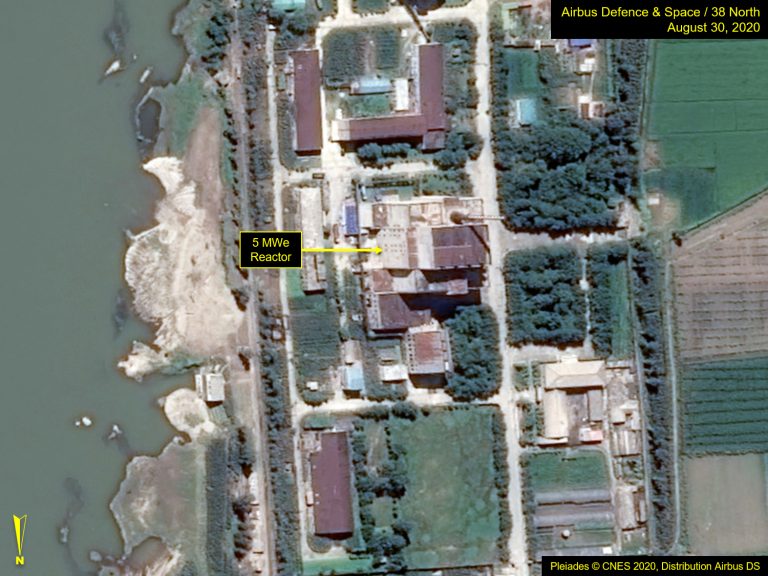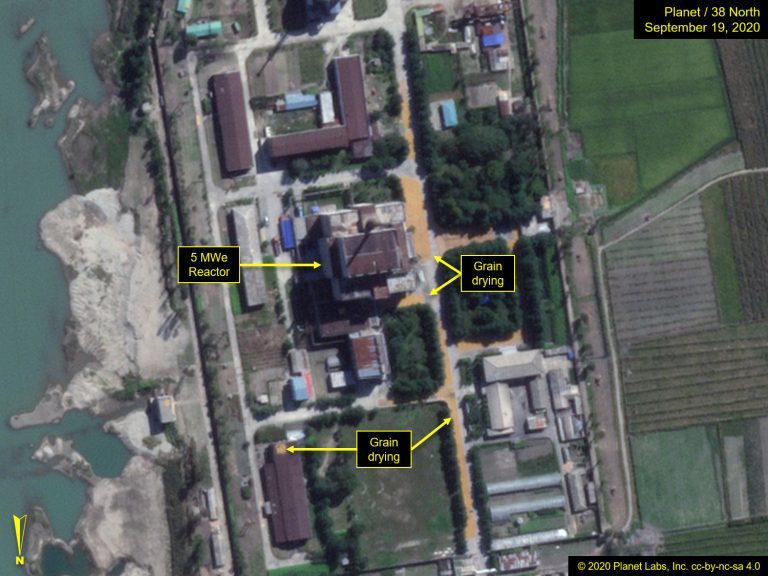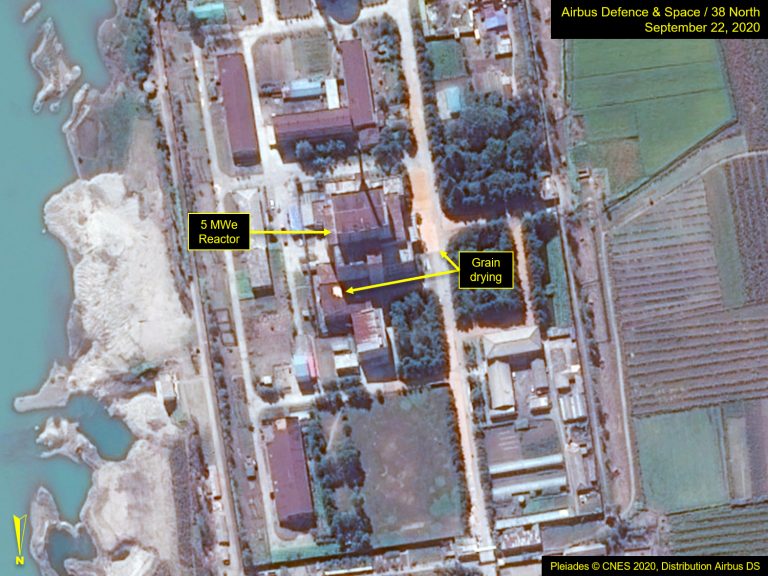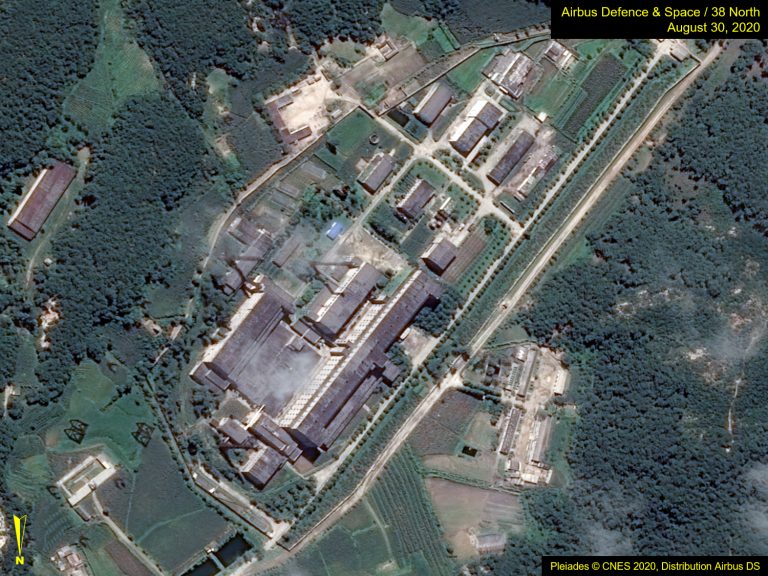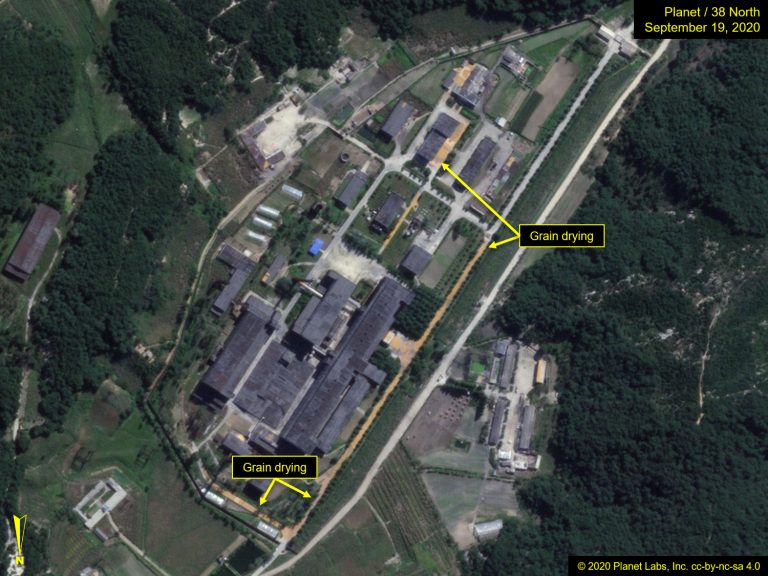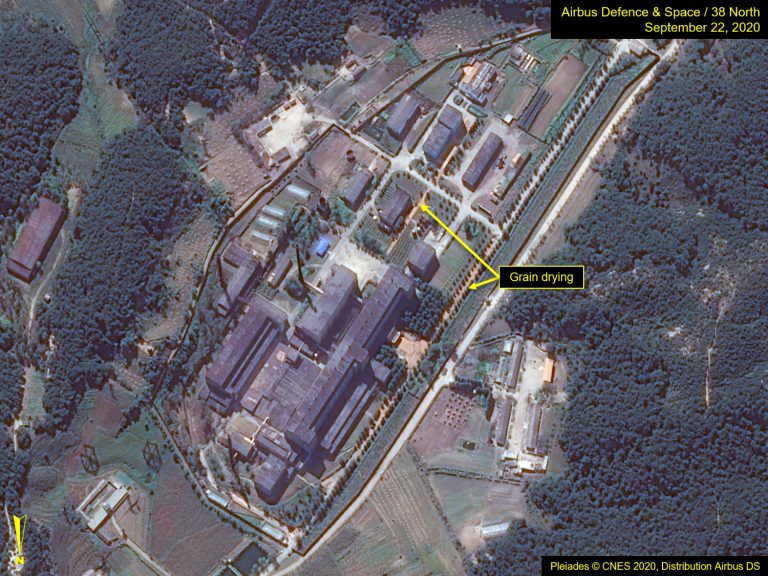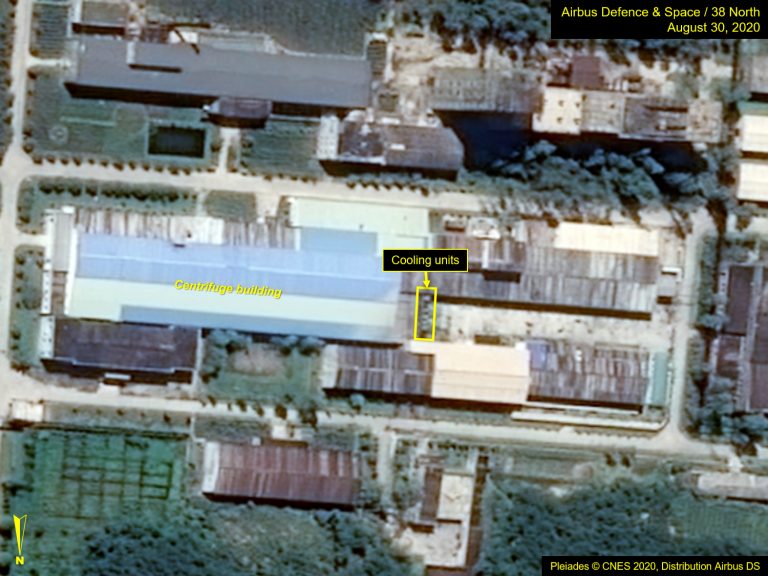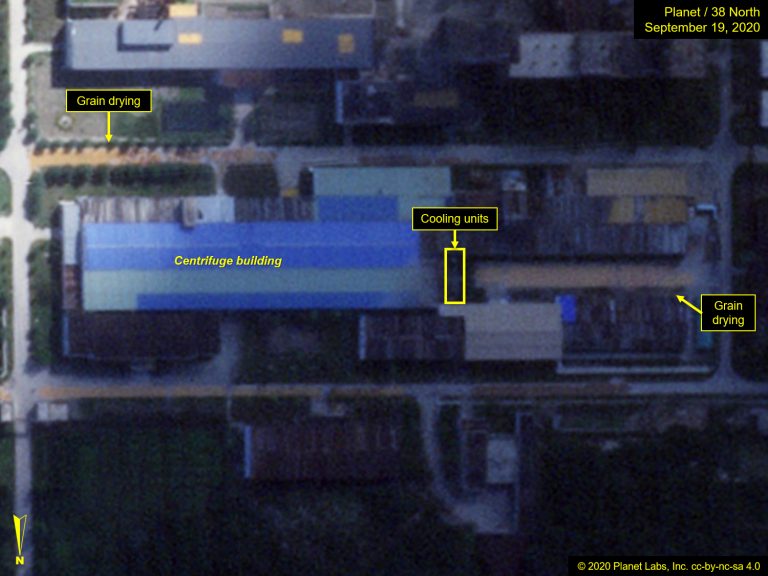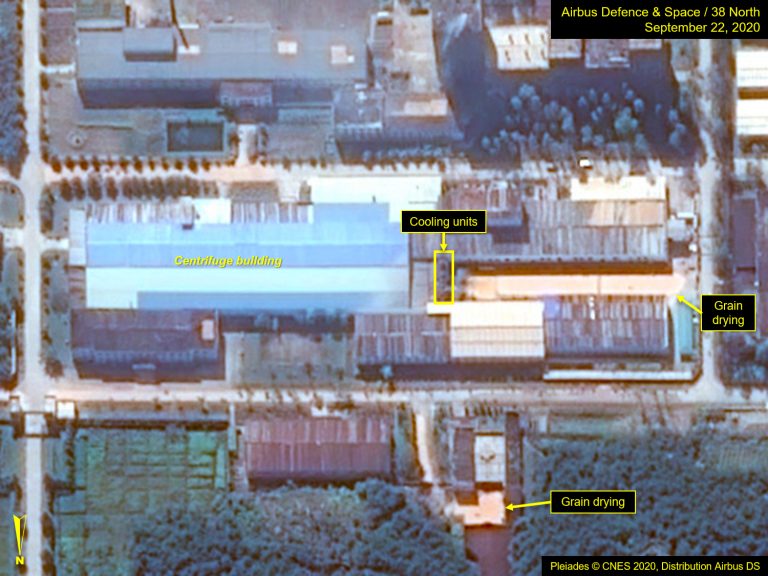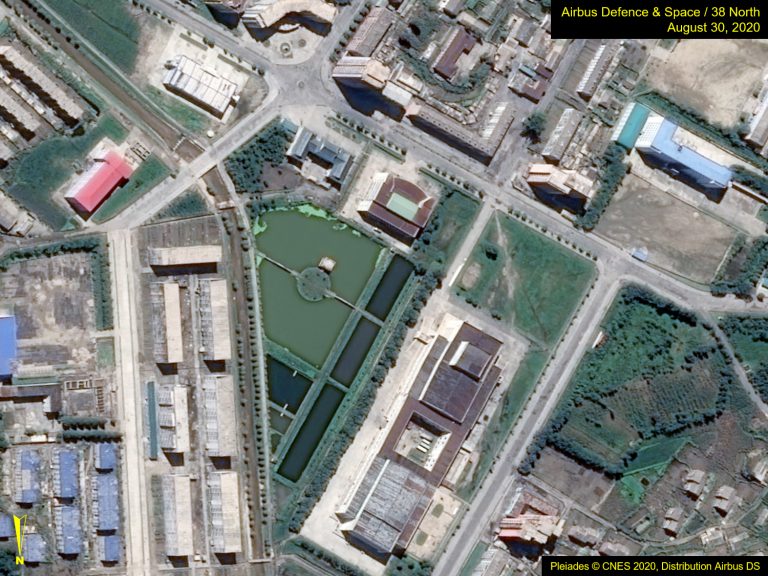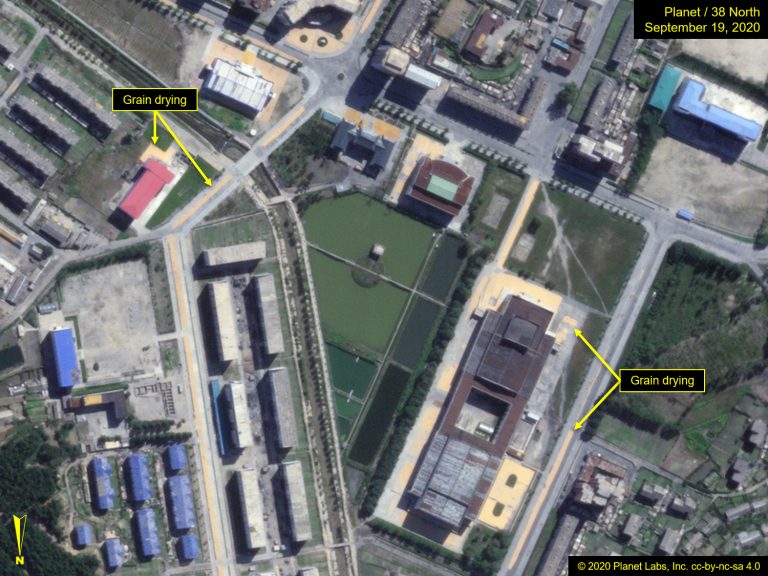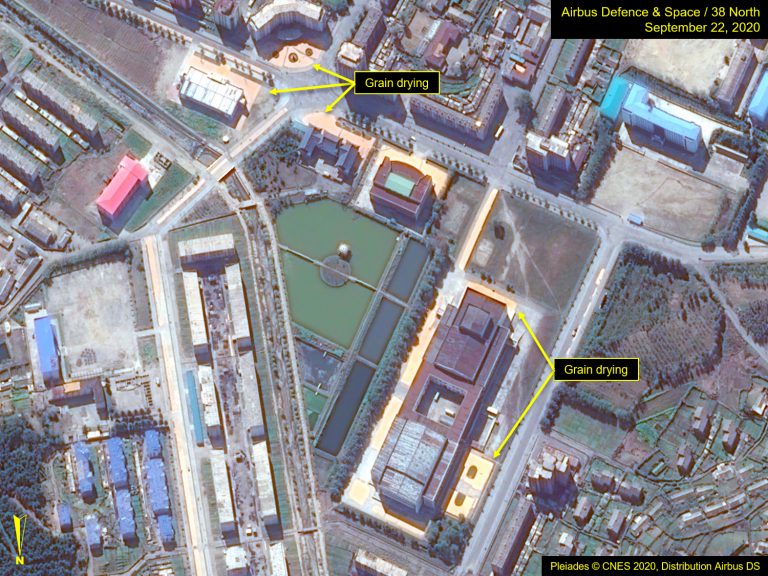North Korea’s Yongbyon Nuclear Center: Drying Off
Commercial satellite imagery of the Yongbyon Nuclear Scientific Research Center from September 22 reveals minimal damage to the buildings throughout the complex, but notable damage along the river. Moreover, the breaching of the overflow dam, which regulates the water level of the river adjacent to the reactor area, raises a more serious concern about the ability to maintain a steady reservoir of water for the reactors when they may be operating in the future.
Additionally, substantial grain drying activities are observed throughout the complex and nearby town. While this is a common occurrence during the harvest season, the scale of what is taking place is well beyond what has been observed in previous years.
Reactor Area
There are no observable indications that the 5 MWe Reactor is operating or that the Experimental Light Water Reactor (ELWR) has been started. Some vehicles are present around the 5 MWe Reactor area, but this has become fairly common over the past year.
The typhoons, which recently impacted North Korea’s west coast, have once again shown the vulnerability of the reactors to seasonal flooding. This is despite the numerous measures taken to protect the site, including dredging along the riverbank to build up the embankments.
The eastern end of the reservoir dam has been breached, resulting in a dramatically lower water level behind the dam, a sharp contrast with the previously reported flooding. The reduced water level has left the two pump houses servicing the reactors “high and dry,” with the water level above the dam down significantly and the intake cisterns exposed.
The inability to maintain a stable reservoir level, regardless of weather conditions, poses a potential problem for continuous reactor operations if the 5 MWe Reactor is restarted or the ELWR is brought online.
Figure 1. Eastern end of reservoir dam breached.
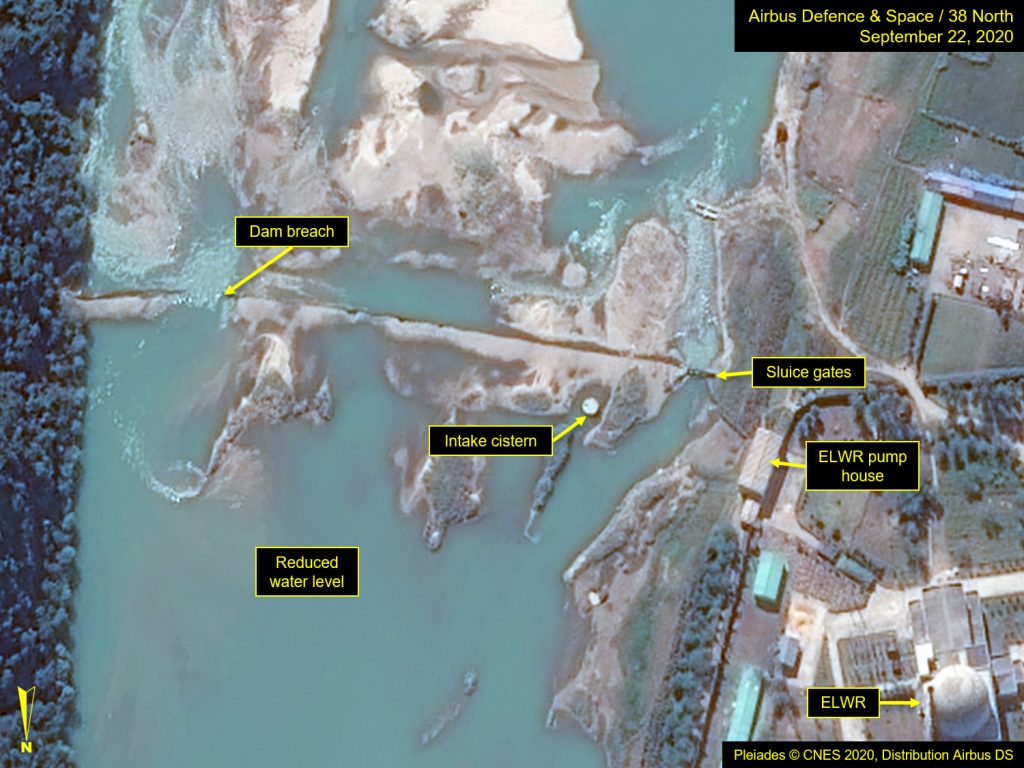
Uranium Enrichment Plant (UEP)
At the Uranium Enrichment Plant, what appeared to be work on the cooling units in July to repair, replace or remove old units seems to have been suspended as post-typhoon clean up and repairs and harvest-related activities are currently underway.
Construction and clean-up on the nearby causeway and bridge continues. It appears that sections of the two man-made islands and channels that were damaged from previous flooding are undergoing repairs.
Figure 2. Construction and clean-up of causeway and bridge continues.
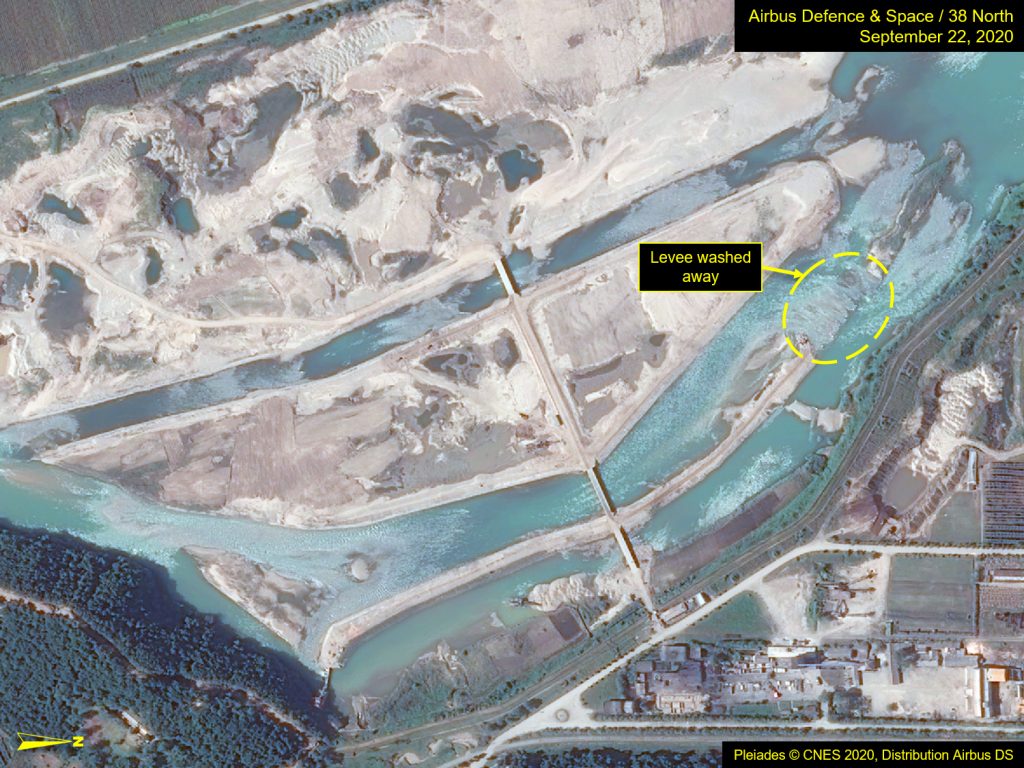
Harvest-Related Activities
Like other areas of the country where harvest activities have been rushed due to the typhoons, the same appears to be true at Yongbyon as well.
While it is common to see some of the hard, flat surfaces covered in drying grains during harvest season, the scale of operations this year is exceptional. There are far more surfaces both within the complex and in the nearby town covered in grains, including low rooftops, wide sidewalks, broad concreted areas such as plazas or parking lots, and even roads. In some cases, the harvest is blocking access to buildings, including several around the UEP and within the Main Research and Administrative Headquarters Area.
Figure 3. Grain drying at the reactor area.
Hover over slideshow and click on left/right arrows to navigate.
Figure 4. Grain drying at the Radiochemical Laboratory.
Hover over slideshow and click on left/right arrows to navigate.
Figure 5. Grain drying at the UEP.
Hover over slideshow and click on left/right arrows to navigate.
Figure 6. Grain drying at the town near Yongbyon.
Hover over slideshow and click on left/right arrows to navigate.

